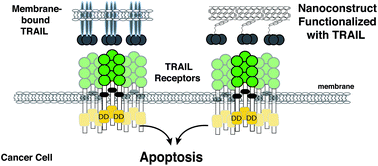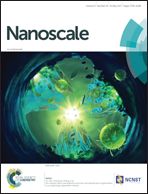TRAIL–NP hybrids for cancer therapy: a review
Abstract
Cancer is a worldwide health problem. It is now considered as a leading cause of morbidity and mortality in developed countries. In the last few decades, considerable progress has been made in anti-cancer therapies, allowing the cure of patients suffering from this disease, or at least helping to prolong their lives. Several cancers, such as those of the lung and pancreas, are still devastating in the absence of therapeutic options. In the early 90s, TRAIL (Tumor Necrosis Factor-related apoptosis-inducing ligand), a cytokine belonging to the TNF superfamily, attracted major interest in oncology owing to its selective anti-tumor properties. Clinical trials using soluble TRAIL or antibodies targeting the two main agonist receptors (TRAIL-R1 and TRAIL-R2) have, however, failed to demonstrate their efficacy in the clinic. TRAIL is expressed on the surface of natural killer or CD8+ T activated cells and contributes to tumor surveillance. Nanoparticles functionalized with TRAIL mimic membrane-TRAIL and exhibit stronger antitumoral properties than soluble TRAIL or TRAIL receptor agonist antibodies. This review provides an update on the association and the use of nanoparticles associated with TRAIL for cancer therapy.



 Please wait while we load your content...
Please wait while we load your content...